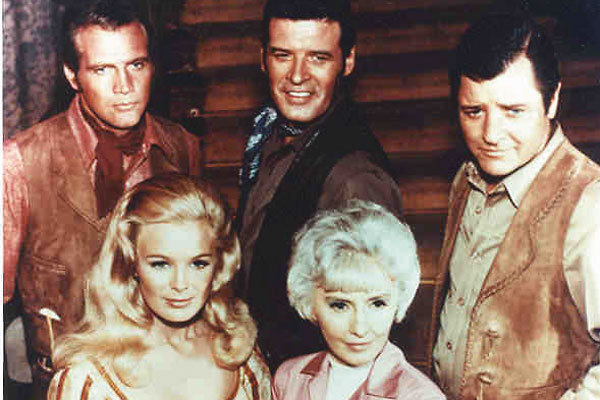
A 1967 ABC episode of The Big Valley illustrated the institutional horrors faced by mentally ill persons and those “undesirables of troublemakers” who could be made to disappear from society by powerful men.
Those in the latter category were often perfectly sane women.
In the episode, “Down Shadow Street,” Victoria Barkley (played by Barbara Stanwyck) witnessed her godson, the son of Judge Tyrone, commit a murder. Within a somewhat convoluted plot, the desperate Judge Tyrone (Robert Middleton) eventually drugged Victoria and hauled her off to a privately owned “insane asylum,” where he planned to keep her indefinitely, to prevent her from testifying against his son.
The value of this episode is related to its depiction of: the ease with which (for the right price) Victoria was “put away,” the cruelty of asylum personnel and the helpless abandonment of the real patients portrayed in the show. Undaunted by her circumstances, the mentally normal Victoria engineered her escape. Unfortunately, she left behind those who probably lingered for years, without treatment or hope for release.
Like Victoria Barkley, some inmates of so-called “insane asylums” in the Old West were not mentally ill at all. Women, in particular, were sometimes deemed to have mental problems if they chronically disobeyed their husbands, spoke out against societal norms or even exhibited disagreeable behaviors and moods during menopause! Such women may have been institutionalized with the general diagnosis of “lunacy,” a so-called intermittent insanity related to the phases of the moon. Once put away, these “undesirables” were often abandoned by their families and divorced by their husbands.
Males who showed up in such institutions were sometimes criminals, alcoholics or sufferers of chronic diseases such as syphilis or tuberculosis. Like their female counterparts, they may have been classified as being “feeble-minded, inebriate, idiotic, moronic, retarded, insane and other descriptive terms that would not be considered diagnostically appropriate today.
In these asylums, physical restraints, solitary confinement and bodily abuse were not uncommon tools of treatment. Given poor nutrition and routinely unsanitary living conditions, patients often died prematurely, even as measured by the life expectancy of the day.
Some patients in the Old West, like those today, clearly suffered from real depression, psychosis, alcoholism, drug addiction and a myriad of other mental derangements. Many of these illnesses now have proven medical causes, like thyroid abnormalities, which can lead to mood disorders and learning disabilities. In the late 19th century, however, doctors had no understanding of the causes of most of these diseases and certainly had no appropriate medications or proven methods of therapy to treat them.
For unmanageable or overactive outpatients, laudanum (opium) or even whiskey was used to calm down the patient. For situational depression (such as the loss of a loved one), the physician may have provided a sedative, along with counseling, a skill, unfortunately, not taught in medical school and one that was usually offered more effectively by the local minister. Matters did not improve until the early to middle part of the 20th century with the arrival of overdue theories that identified the psychological, medical and biochemical origins of some mental illnesses. New medications for the functional management of mood disorders and psychoses have led to the virtual elimination of patient institutionalization for all but a handful of intractable psychiatric problems, such as criminal insanity.
Unlike the private insane asylum to which Victoria was committed, by the late 1800s, public asylums were operated under far greater scrutiny. My review of the December 5, 1899, rules governing the behavior and expectations of physicians at the Colorado State Insane Asylum revealed surprisingly high standards for patient care. Barkley’s abductor was too smart to take her to a public institution where relatively decent records were kept and bribery would have had less chance for success.
Barkley’s resourcefulness and grit saved her from a fate worse than death. Woe was it, however, to the unnumbered, less capable inmates of some private asylums in those days who were left to languish for a lifetime, without any hope of rescue, only to be buried in unmarked graves.






